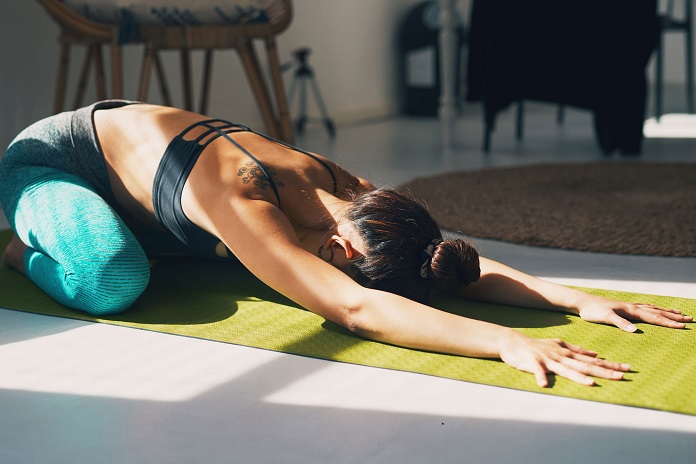Body pain has become a major problem these days however when you dont have the exercise habits body usually starts to pain at a young age. If you are facing the same problem then this article is for you, when you incorporate these specific exercises and postures into your daily routine then you can significantly enhance your quality of life by improving flexibility, strength, and overall well-being.
In addition, these practices can help alleviate chronic pain and discomfort.
20 Exercises Postures
Similarly here are the 20 Exercises in posture for the body that help to improve your life and relieve Pain
1. Cat-Cow Stretch
This exercise stretch improves the flexibility of the spine and strengthens the core muscles. By alternating between arching and rounding your back, it also helps to alleviate lower back pain, improves spinal mobility, and promotes better posture.
Benefits: Improves spinal flexibility, alleviates lower back pain, and enhances core strength.
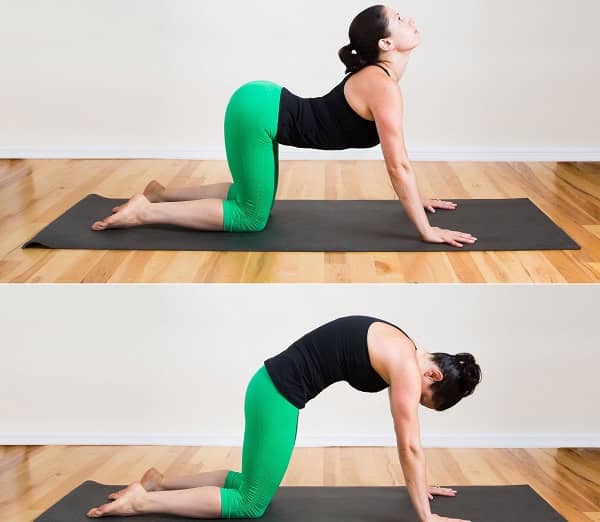
- Start on all fours with your wrists aligned under your shoulders and knees under your hips.
- Inhale as you arch your back, lifting your head and tailbone towards the ceiling (Cow Pose).
- Exhale as you round your spine, tucking your chin and pelvis (Cat Pose).
- Repeat 10-15 times, moving fluidly between poses.
2. Downward-Facing Dog
This pose stretches and lengthens the entire back body, including the hamstrings, calves, and spine. It also strengthens the arms, shoulders, and legs. It’s beneficial for relieving tension, improving circulation, and reducing overall body stiffness.
Benefits: Stretches the hamstrings, calves, and spine; strengthens the arms and legs; and relieves tension.
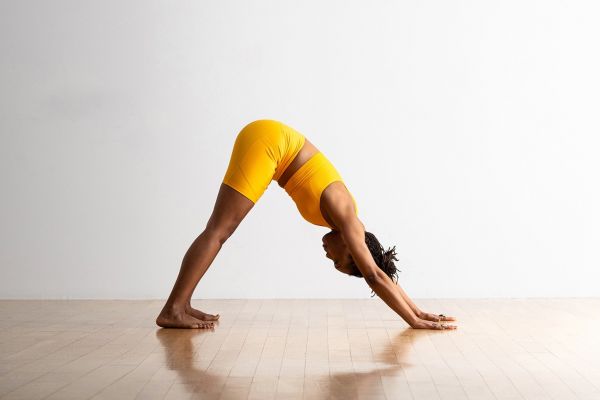
- Begin on all fours and lift your hips up and back, straightening your legs and arms.
- Press your heels towards the ground and lengthen your spine.
- Hold for 20-30 seconds, then return to the starting position.
- Repeat 3-5 times.
3. Child’s Pose
This exercise gently stretches the back, hips, and thighs, promoting relaxation and reducing stress. It helps to relieve lower back pain and tension in the neck and shoulders, making it a great restorative posture.
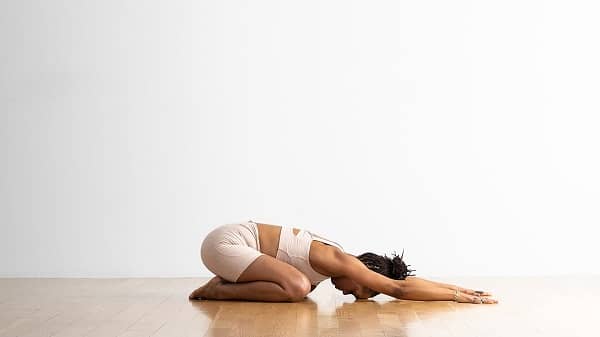
Benefits: Provides a gentle stretch for the back, hips, and thighs; helps relieve stress and fatigue.
- Kneel on the floor, touching your big toes together and sitting on your heels.
- Extend your arms forward and lower your torso towards the ground.
- Rest your forehead on the floor and hold for 30 seconds to 1 minute.
- Return to a kneeling position and repeat as needed.
4. Forward Fold
This pose stretches the hamstrings, lower back, and calves, which can alleviate tightness and discomfort in these areas. It also helps calm the nervous system and can reduce feelings of anxiety and stress.
Benefits: Stretches the hamstrings, lower back, and calves; promotes relaxation.
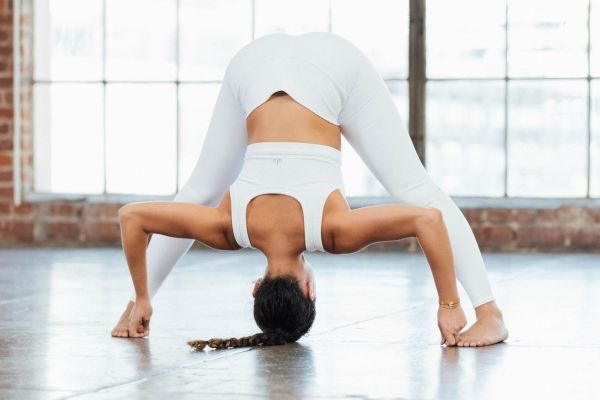
- Stand with your feet hip-width apart.
- Hinge at the hips and bend forward, letting your upper body hang down.
- If possible, touch your toes or the floor.
- Hold for 20-30 seconds, then slowly rise.
5. Seated Forward Bend
By stretching the spine and hamstrings, this posture helps to release tension and increase flexibility. It also promotes relaxation and can aid in calming the mind, reducing stress levels for this exercise you can also perform with you partner.
Benefits: Stretches the spine, hamstrings, and calves; calms the nervous system.
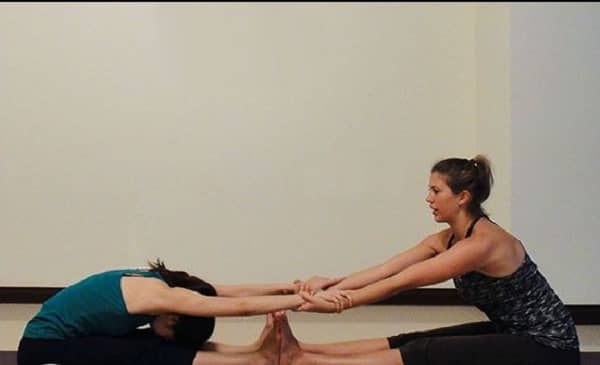
- Sit with your legs extended straight in front of you.
- Inhale and lengthen your spine, then exhale as you fold forward.
- Reach for your feet or shins, keeping your back straight.
- Hold for 20-30 seconds, then slowly rise.
6. Cobra Pose
This pose stretches the chest, shoulders, and abdomen while strengthening the lower back. It is effective for relieving lower back pain, improving spinal flexibility, and opening the chest and heart area, which can help with deep breathing.
Benefits: Stretches the chest, shoulders, and abdomen; relieves lower back pain.

- Lie face down on the floor with your legs extended and hands under your shoulders.
- Press into your hands and lift your chest, keeping your elbows slightly bent.
- Hold for 20-30 seconds, then lower back down.
7. Bridge Pose
Strengthens the lower back, glutes, and core muscles while stretching the chest and spine. It’s beneficial for improving posture, alleviating lower back pain, and enhancing overall core stability.
Benefits: Strengthens the lower back, glutes, and core; stretches the chest and spine.
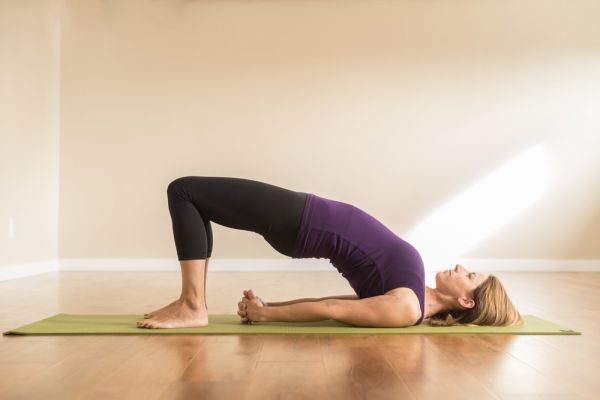
- Lie on your back with your knees bent and feet flat on the floor.
- Lift your hips towards the ceiling, squeezing your glutes.
- Hold for 20-30 seconds, then lower your hips back down.
8. Supine Twist
This exercise gently spinal twist stretches the back and hips, promoting better spinal mobility and alleviating tension. It helps to relieve lower back pain and improve digestion by massaging the abdominal organs.
Benefits: Relieves tension in the spine and hips; improves spinal mobility.
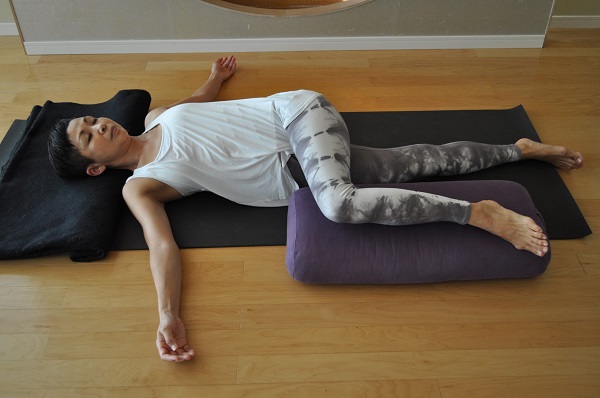
- Lie on your back with your arms extended out to the sides.
- Bend your knees and place your feet flat on the floor.
- Gently twist your knees to one side while keeping your shoulders on the ground.
- Hold for 20-30 seconds, then switch sides.
9. Piriformis Stretch
This exercise targets the piriformis muscle, this stretch can alleviate sciatic pain and tightness in the glutes. It helps reduce discomfort associated with piriformis syndrome and improves hip flexibility.
Benefits: Alleviates sciatica and piriformis syndrome; stretches the glutes and hips.
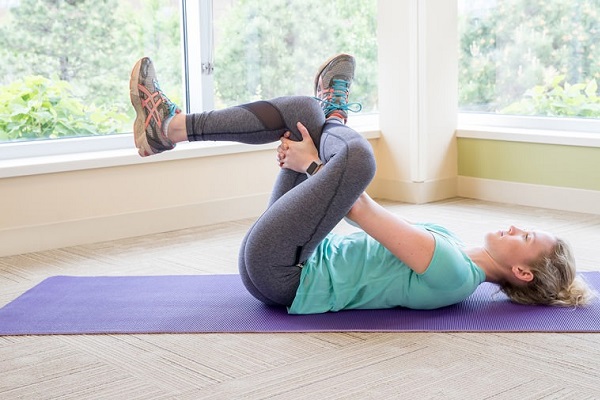
- Lie on your back with your knees bent and feet flat on the floor.
- Place your right ankle on your left knee and gently press your right knee away from your body.
- Hold for 20-30 seconds, then switch sides.
10. Hamstring Stretch
This exercise, stretching the hamstrings can relieve tightness and discomfort in the back of the legs and lower back. It enhances overall flexibility, which can prevent injuries and improve movement efficiency.
Benefits: Relieves tightness in the hamstrings; improves flexibility.
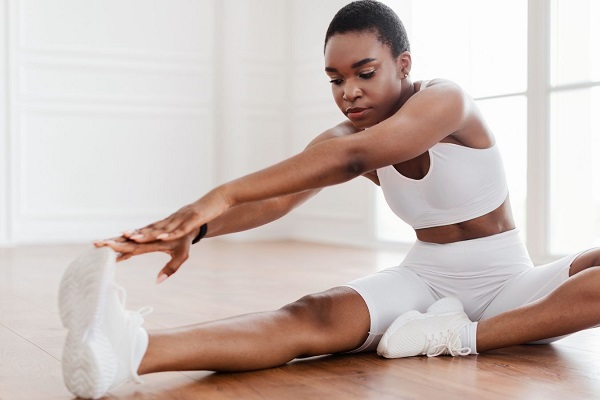
- Sit with one leg extended straight and the other bent so the foot is near the inner thigh of the extended leg.
- Reach forward towards the extended leg, keeping your back straight.
- Hold for 20-30 seconds, then switch legs.
11. Wall Angels
This exercise strengthens and stretches the shoulders and upper back, improving posture and reducing shoulder pain. It’s effective for counteracting the effects of poor posture and prolonged sitting.
Benefits: Improves posture; strengthens and stretches the shoulders and upper back.
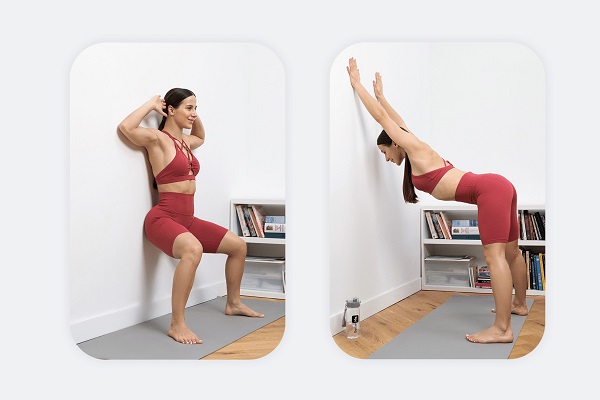
- Stand with your back against a wall and your feet about 6 inches away from the wall.
- Press your lower back, upper back, and head against the wall.
- Raise your arms to form a “W” shape with your elbows bent.
- Slowly raise and lower your arms, keeping them in contact with the wall.
- Perform 10-15 repetitions.
12. Plank Pose
This exercise strengthens the core, shoulders, and back while improving overall stability and posture. It can help reduce lower back pain by building core strength and enhancing support for the spine.
Benefits: Strengthens the core, shoulders, and back; improves stability.
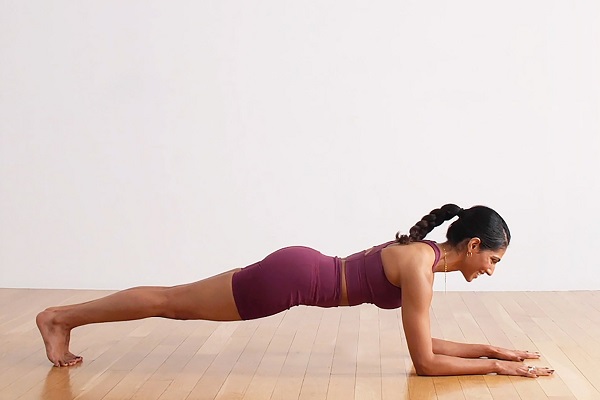
- Begin in a push-up position with your hands directly under your shoulders.
- Keep your body in a straight line from head to heels.
- Hold for 20-60 seconds, then lower down.
13. Side Plank
This exercise, targets the oblique muscles, shoulders, and hips, improving balance and core strength. It helps to stabilize the spine and reduce lower back pain by strengthening the muscles that support it.
Benefits: Strengthens the obliques, shoulders, and hips; enhances balance.
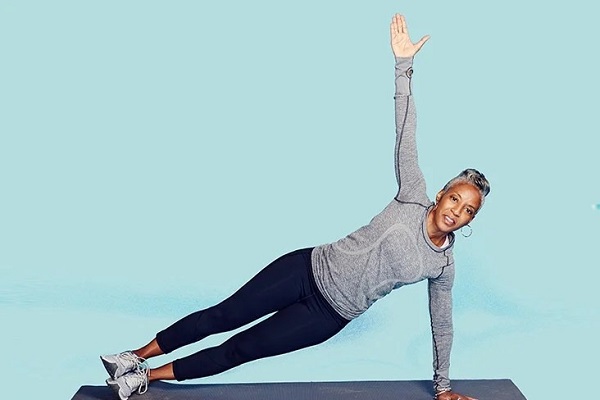
- Start by lying on your side with your legs extended and feet stacked.
- Lift your hips off the ground, supporting your body on one forearm.
- Hold for 20-30 seconds, then switch sides.
14. Shoulder Bridge
This exercise strengthens the shoulders, back, and core while improving posture. It helps to alleviate lower back pain and strengthen the posterior chain, which supports overall back health.
Benefits: Strengthens the shoulders, back, and core; improves posture.

- Lie on your back with your knees bent and feet flat on the floor.
- Lift your shoulders off the ground, keeping your head and neck relaxed.
- Hold for 20-30 seconds, then lower back down.
15. Legs-Up-the-Wall Pose
This exercise, Promotes relaxation and reduces lower back pain by allowing the spine to decompress and the legs to rest. It improves circulation, reduces swelling, and can help relieve tired legs and feet.
Benefits: Relieves lower back pain; improves circulation and relaxation.
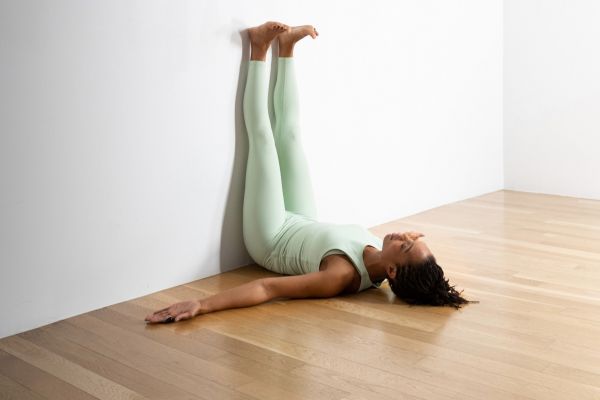
- Sit next to a wall and lie back, swinging your legs up the wall.
- Allow your arms to rest at your sides, palms up.
- Hold for 5-15 minutes.
16. Reclined Bound Angle Pose
This exercise stretches the inner thighs and groin while promoting relaxation and reducing stress. It helps to relieve tension in the hips and lower back, making it useful for improving flexibility and calming the mind.
Benefits: Stretches the inner thighs and groin; promotes relaxation.
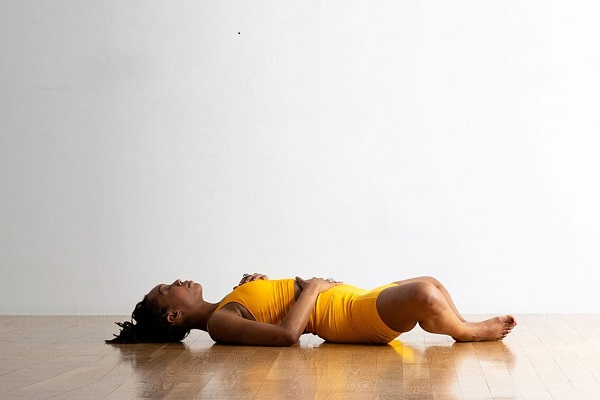
- Lie on your back with your knees bent and feet together.
- Allow your knees to fall out to the sides, creating a diamond shape with your legs.
- Hold for 1-2 minutes.
17. Lunge Stretch
This exercise stretches the hip flexors and quadriceps, which can become tight from prolonged sitting. It improves flexibility in the hips, reduces discomfort, and enhances overall balance and stability.
Benefits: Stretches the hip flexors and quadriceps; improves flexibility and balance.

Athletics Weekly
- Step one foot forward into a lunge position, keeping the back leg extended and the front knee bent.
- Press your hips forward and hold for 20-30 seconds.
- Switch legs and repeat.
18. T-Pose
This exercise strengthens the upper back and shoulders, which is important for maintaining good posture and reducing upper back pain.
Benefits: Strengthens the upper back and shoulders; improves posture.
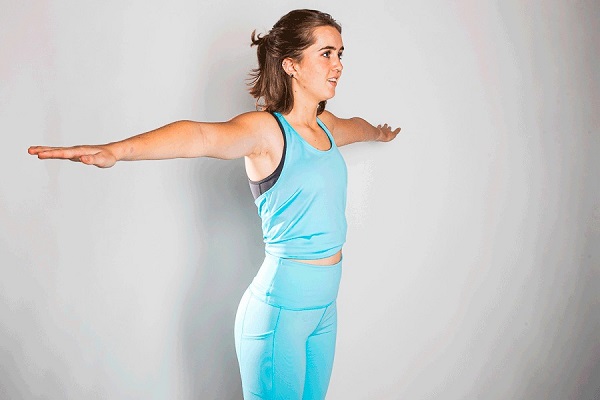
- Stand with your feet hip-width apart and extend your arms out to the sides.
- Rotate your palms up and squeeze your shoulder blades together.
- Hold for 20-30 seconds, then relax.
19. Standing Quad Stretch
This exercise stretches the quadriceps and improves flexibility in the front of the thighs. It can help alleviate tightness and discomfort in the legs and hips, improving overall mobility and balance.
Benefits: Stretches the quadriceps; improves flexibility and balance.

- Stand on one leg and pull your other foot towards your buttocks.
- Hold your ankle with your hand, keeping your knees close together.
- Hold for 20-30 seconds, then switch legs.
20. Knee-to-Chest Stretch
This exercise, Relieves lower back pain and stretches the glutes and lower back. It helps to reduce muscle tension and improve flexibility, which can be beneficial for overall comfort and movement.
Benefits: Relieves lower back pain; stretches the glutes and lower back.
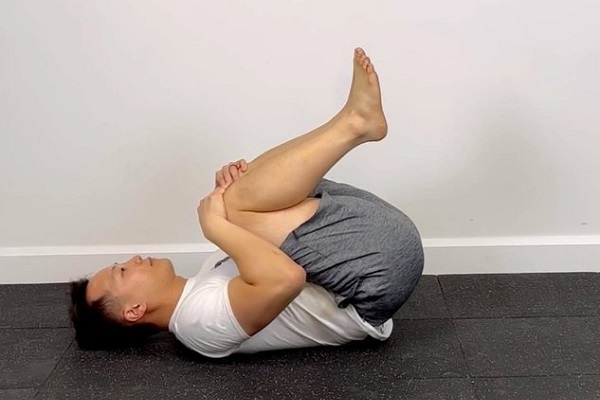
- Lie on your back with your knees bent and feet flat on the floor.
- Pull one knee towards your chest, holding it with both hands.
- Hold for 20-30 seconds, then switch legs.
Conclusion
Getting involved in these exercises and maintaining postures into your routine can lead to significant improvements in physical health and well-being. Regular practice can help alleviate pain, enhance flexibility, and strengthen your body.
Remember, consistency is key, and combining these exercises with a balanced diet and proper hydration will further enhance your overall health.
If you feel any kind of discomfort then you can consult with your doctor.
FAQs
How can I avoid straining my back in this pose? (Seated Forward Bend)
For this pose, you need to Keep your back straight and only reach as far as is comfortable but don’t exercise it more.
Can this pose help with lower back pain? (Cobra Pose)
Yes, it can help by stretching the abdominal muscles and relieving tension in the lower back.
How deep should I go in this stretch? (Hamstring Stretch)
For Hamstring Stretch, Stretch to the point of mild tension, not pain, and avoid bouncing.
Also, read more about How Many Calories Does Walking Burn? Does it help in weight loss?
